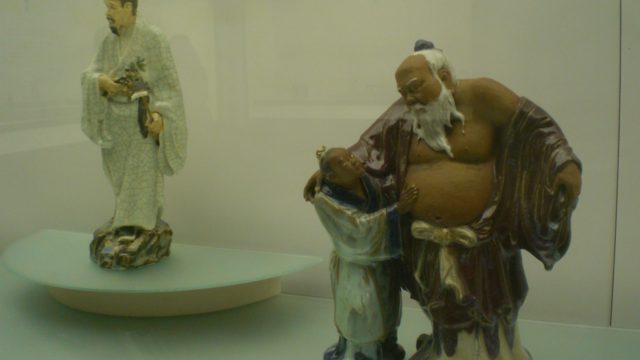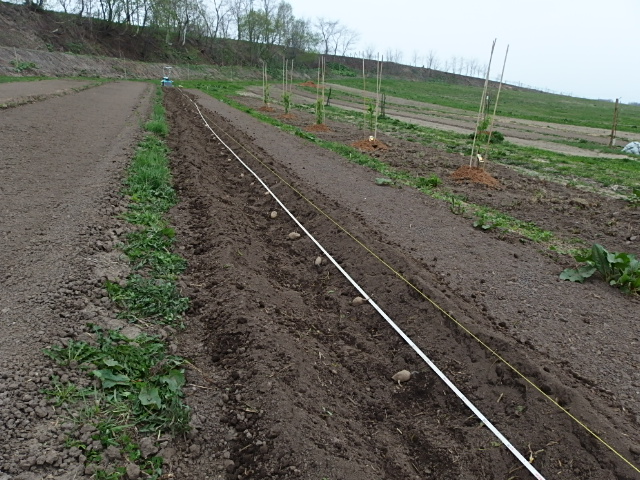https://japansafety.wordpress.com/
TAG ARCHIVES: SAITAMA
What’s really going on at Fukushima? — Counterpunch
By Robert Hunziker: ” Fukushima’s still radiating, self-perpetuating, immeasurable, and limitless, like a horrible incorrigible Doctor Who monster encounter in deep space.
Fukushima will likely go down in history as the biggest cover-up of the 21st Century. Governments and corporations are not leveling with citizens about the risks and dangers; similarly, truth itself, as an ethical standard, is at risk of going to shambles as the glue that holds together the trust and belief in society’s institutions. Ultimately, this is an example of how societies fail.
Tens of thousands of Fukushima residents remain in temporary housing more than four years after the horrific disaster of March 2011. Some areas on the outskirts of Fukushima have officially reopened to former residents, but many of those former residents are reluctant to return home because of widespread distrust of government claims that it is okay and safe.
Part of this reluctance has to do with radiation’s symptoms. It is insidious because it cannot be detected by human senses. People are not biologically equipped to feel its power, or see, or hear, touch or smell it (Caldicott). Not only that, it slowly accumulates over time in a dastardly fashion that serves to hide its effects until it is too late.
Chernobyl’s Destruction Mirrors Fukushima’s Future
As an example of how media fails to deal with disaster blowback, here are some Chernobyl facts that have not received enough widespread news coverage: Over one million (1,000,000) people have already died from Chernobyl’s fallout.
Additionally, the Rechitsa Orphanage in Belarus has been caring for a very large population of deathly sick and deformed children. Children are 10 to 20 times more sensitive to radiation than adults.
Zhuravichi Children’s Home is another institution, among many, for the Chernobyl-stricken: “The home is hidden deep in the countryside and, even today, the majority of people in Belarus are not aware of the existence of such institutions” (Source: Chernobyl Children’s Project-UK).
One million (1,000,000) is a lot of dead people. But, how many more will die? Approximately seven million (7,000,000) people in the Chernobyl vicinity were hit with one of the most potent exposures to radiation in the history of the Atomic Age.
The exclusion zone around Chernobyl is known as “Death Valley.” It has been increased from 30 to 70 square kilometres. No humans will ever be able to live in the zone again. It is a permanent “dead zone.”
Additionally, over 25,000 died and 70,000 disabled because of exposure to extremely dangerous levels of radiation in order to help contain Chernobyl. Twenty percent of those deaths were suicides, as the slow agonizing “death march of radiation exposure” was too much to endure.
Fukushima- The Real Story
In late 2014, Helen Caldicott, M.D. gave a speech about Fukushima at Seattle Town Hall (9/28/14). Pirate Television recorded her speech; here’s the link:
Dr. Helen Caldicott is co-founder of Physicians for Social Responsibility, and she is author/editor of Crisis Without End: The Medical and Ecological Consequences of the Fukushima Nuclear Catastrophe, The New Press, September 2014. For over four decades Dr. Caldicott has been the embodiment of the anti-nuclear banner, and as such, many people around the world classify her as a “national treasure”. She’s truthful and honest and knowledgeable.
Fukushima is literally a time bomb in quiescence. Another powerful quake and all hell could break loose. Also, it is not even close to being under control. Rather, it is totally out of control. According to Dr. Caldicott, “It’s still possible that Tokyo may have to be evacuated, depending upon how things go.” Imagine that!
According to Japan Times as of March 11, 2015: “There have been quite a few accidents and problems at the Fukushima plant in the past year, and we need to face the reality that they are causing anxiety and anger among people in Fukushima, as explained by Shunichi Tanaka at the Nuclear Regulation Authority. Furthermore, Mr. Tanaka said, there are numerous risks that could cause various accidents and problems.”
Even more ominously, Seiichi Mizuno, a former member of Japan’s House of Councillors (Upper House of Parliament, 1995-2001) in March 2015 said: “The biggest problem is the melt-through of reactor cores… We have groundwater contamination… The idea that the contaminated water is somehow blocked in the harbor is especially absurd. It is leaking directly into the ocean. There’s evidence of more than 40 known hotspot areas where extremely contaminated water is flowing directly into the ocean… We face huge problems with no prospect of solution.” (Source: Nuclear Hotseat #194: Fukushima 4th Anniversary – Voices from Japan, March 10, 2015, http://www.nuclearhotseat.com/2468/)
At Fukushima, each reactor required one million gallons of water per minute for cooling, but when the tsunami hit, the backup diesel generators were drowned. Units 1, 2, and 3 had meltdowns within days. There were four hydrogen explosions. Thereafter, the melting cores burrowed into the container vessels, maybe into the earth.
According to Dr. Caldicott, “One hundred tons of terribly hot radioactive lava has already gone into the earth or somewhere within the container vessels, which are all cracked and broken.” Nobody really knows for sure where the hot radioactive lava resides. The scary unanswered question: Is it the China Syndrome?
Following the meltdown, the Japanese government did not inform people of the ambient levels of radiation that blew back onto the island. Unfortunately and mistakenly, people fled away from the reactors to the highest radiation levels on the island at the time.
As the disaster happened, enormous levels of radiation hit Tokyo. The highest radiation detected in the Tokyo Metro area was in Saitama with cesium radiation levels detected at 919,000 becquerel (Bq) per square meter, a level almost twice as high as Chernobyl’s “permanent dead zone evacuation limit of 500,000 Bq” (source: Radiation Defense Project). For that reason, Dr. Caldicott strongly advises against travel to Japan and recommends avoiding Japanese food.
Even so, post the Fukushima disaster, Secretary of State Hillary Clinton signed an agreement with Japan that the U.S. would continue importing Japanese foodstuff. Therefore, Dr. Caldicott suggests people not vote for Hillary Clinton. One reckless dangerous precedent is enough for her.
According to Arnie Gundersen, an energy advisor with 39 years of nuclear power engineering experience, as reported in The Canadian on August 15, 2011: “The US government has come up with a decision at the highest levels of the State Department, as well as other departments who made a decision to downplay Fukushima. In April, the month after the powerful tsunami and earthquake crippled Japan including its nuclear power plant, Hillary Clinton signed a pact with Japan that she agreed there is no problem with Japanese food supply and we will continue to buy them. So, we are not sampling food coming in from Japan.”
However, in stark contrast to the United States, in Europe Angela Merkel, PhD physics, University of Leipzig and current chancellor of Germany is shutting down all nuclear reactors because of Fukushima.
Maybe an advanced degree in physics makes the difference in how a leader approaches the nuclear power issue. It certainly looks that way when comparing/contrasting the two pantsuit-wearing leaders, Chancellor Merkel and former secretary of state Clinton.
After the Fukushima blow up, ambient levels of radiation in Washington State went up 40,000 times above normal, but according to Dr. Caldicott, the U.S. media does not cover the “ongoing Fukushima mess.” So, who would really know?
Dr. Caldicott ended her speech on Sept. 2014 by saying: “In Fukushima, it is not over. Everyday, four hundred tons of highly radioactive water pours into the Pacific and heads towards the U.S. Because the radiation accumulates in fish, we get that too. The U.S. government is not testing the water, not testing the fish, and not testing the ambient air. Also, people in Japan are eating radiation every day.”
Furthermore, according to Dr. Caldicott: “Rainwater washes over the nuclear cores into the Pacific. There is no way they can get to those cores, men die, robots get fried. Fukushima will never be solved. Meanwhile, people are still living in highly radioactive areas.”
Fukushima will never be solved because “men die” and “robots get fried.” By the sounds of it, Fukushima is a perpetual radiation meltdown scenario that literally sets on the edge of a bottomless doomsday pit, in waiting to be nudged over.
UN All-Clear Report
A UN (UNSCEAR) report on April 2, 2014 on health impacts of the Fukushima accident concluded that any radiation-induced effects would be too small to identify. People were well protected and received “low or very low” radiation doses. UNSCEAR gave an all-clear report.
Rebuttal of the UNSCEAR report by the German affiliate of the International Physicians for the Prevention of Nuclear War d/d July 18, 2014 takes a defiant stance in opposition to the UN report, to wit: “The Fukushima nuclear disaster is far from over. Despite the declaration of ‘cold shutdown’ by the Japanese government in December 2011, the crippled reactors have not yet achieved a stable status and even UNSCEAR admits that emissions of radioisotopes are continuing unabated. 188 TEPCO is struggling with an enormous amount of contaminated water, which continues to leak into the surrounding soil and sea. Large quantities of contaminated cooling water are accumulating at the site. Failures in the makeshift cooling systems are occurring repeatedly. The discharge of radioactive waste will most likely continue for a long time.”
“Both the damaged nuclear reactors and the spent fuel ponds contain vast amounts of radioactivity and are highly vulnerable to further earthquakes, tsunamis, typhoons and human error. Catastrophic releases of radioactivity could occur at any time and eliminating this risk will take many decades… It is impossible at this point in time to come up with an exact prognosis of the effects that the Fukushima nuclear disaster will have on the population in Japan… the UNSCEAR report represents a systematic underestimation and conjures up an illusion of scientific certainty that obscures the true impact of the nuclear catastrophe on health and the environment.”
To read the full text of the rejoinder to the UN report, go to:https://japansafety.wordpress.com/tag/saitama/
Fukushima’s Radiation and the Future
Mari Yamaguchi, Associated Press (AP), June 12, 2015: “Four years after an earthquake and tsunami destroyed Japan’s Fukushima nuclear power plant, the road ahead remains riddled with unknowns… Experts have yet to pinpoint the exact location of the melted fuel inside the three reactors and study it, and still need to develop robots capable of working safely in such highly radioactive conditions. And then there’s the question of what to do with the waste… serious doubts about whether the cleanup can be completed within 40 years.”
“Although the Chernobyl accident was a terrible accident, it only involved one reactor. With Fukushima, we have the minimum [of] 3 reactors that are emitting dangerous radiation. The work involved to deal with this accident will take tens of years, hundreds of years,” Prof. Hiroaki Koide (retired), Kyoto University Research Reactor Institute, April 25, 2015. “It could be that some of the fuel could actually have gone through the floor of the containment vessel as well… What I’ve just described is very, very logical for anyone who understands nuclear engineering or nuclear energy,” which dreadfully spells-out: THE CHINA SYNDROME.
According to the Smithsonian, April 30, 2015: “Birds Are in a Tailspin Four Years After Fukushima: Bird species are in sharp decline, and it is getting worse over time… Where it’s much, much hotter, it’s dead silent. You’ll see one or two birds if you’re lucky.” Developmental abnormalities of birds include cataracts, tumors, and asymmetries. Birds are spotted with strange white patches on their feathers.
Maya Moore, a former NHK news anchor, authored a book about the disaster: The Rose Garden of Fukushima (Tankobon, 2014), about the roses of Mr. Katsuhide Okada. Today, the garden has perished: “It’s just poisoned wasteland. The last time Mr. Okada actually went back there, he found baby crows that could not fly, that were blind. Mutations have begun with animals, with birds.”
The Rose Garden of Fukushima features a collection of photos of an actual garden that existed in Fukushima, Japan. Boasting over 7500 bushes of roses and 50-thousand visitors a year, the Garden was rendered null and void in an instant due to the triple disaster — earthquake, tsunami, and meltdown.
The forward to Maya’s book was written by John Roos, former US Ambassador to Japan 2009-13: “The incredible tale of Katz Okada and his Fukushima rose garden was told here by Maya Moore… gives you a small window into what the people of Tohoku faced.”
Roos’ “small window” could very well serve as a metaphor for a huge black hole smack dab in the heart of civilization. Similarly, Fukushima is a veritable destruction machine that consumes everything in its path, and beyond, and its path is likely to grow. For certain, it is not going away.
Thus, TEPCO (Tokyo Electric Power Company) is deeply involved in an asymmetric battle against enormously powerful unleashed out-of-control forces of E=mc2.
Clearly, TEPCO has its back to the wall. Furthermore, it’s doubtful TEPCO will “break the back of the beast.” In fact, it may be an impossible task.
Maybe, just maybe, Greater Tokyo’s 38 million residents will eventually be evacuated. Who knows for sure?
Only Godzilla knows! ”
Critical Analysis of the UNSCEAR Report, “Levels and effects of radiation exposure due to the nuclear accident…” — IPPNW
Here is an excellent analysis of the UNSCEAR Report, “Levels and effects of radiation exposure due to the nuclear accident after the 2011 Great East-Japan Earthquake and tsunami.” This analysis was organized by the German Affiliate of the International Physicians for the Prevention of Nuclear War (IPPNW) and includes a number international physician groups for social and environmental responsibility and prevention of nuclear war. Quoted below is the conclusion for those of you who want the big picture. I strongly urge you to read the full document in pdf form: Critical Analysis of Unscear2014 (1)
” IV. Conclusion
The Fukushima nuclear disaster is far from over. Despite the declaration of “cold shutdown” by the Japanese government in December of 2011, the crippled reactors have not yet achieved a stable status and even UNSCEAR admits that emissions of radioisotopes are continuing unabated. 188 TEPCO is struggling with an enormous amount of contaminated water, which continues to leak into the surrounding soil and sea. Large quantities of contaminated cooling water are accumulating at the site. Failures in the makeshift cooling systems are occurring repeatedly. The discharge of radioactive waste will most likely continue for a long time.
Both the damaged nuclear reactors and the spent fuel ponds contain vast amounts of radioactivity and are highly vulnerable to further earthquakes, tsunamis, typhoons and human error. Catastrophic releases of radioactivity could occur at any time and eliminating this risk will take many decades. Moreover, many of Japan’s other nuclear power stations are just as sensitive to seismic catastrophes as the Fukushima Dai-ichi plant.
Attempts to make reliable forecasts for the next decades seem futile against the backdrop of so much uncertainty. While much of the UNSCEAR report represents useful and important groundwork for future assessments, it does not in any way justify the type of ‘all-clear’ that UNSCEAR is proposing.
It is impossible at this point to come up with an exact prognosis of the effects that the Fukushima nuclear disaster will have on the population in Japan. However, based on the arguments presented in this paper, it has to be stated that the UNSCEAR report represents a systematic underestimation and conjures up an illusion of scientific certainty that obscures the true impact of the nuclear catastrophe on health and the environment.
In its report, UNSCEAR calculates the collective effective doses and absorbed thyroid doses for the Japanese population. However, the admitted uncertainties regarding exposure doses, questionable data selection, faulty assumptions and the fact that ongoing radioactive emissions were not considered undermine the validity of these calculations. The resulting dose estimates are most likely underestimated and do not reflect the true extent of radiation received by the affected population.
By utilizing more neutral sets of data, acknowledging inherent uncertainties in dose estimates, citing the full range of possible exposure rates rather than the best-case scenarios, and by incorporating the latest information about ongoing radioactive emissions, UNSCEAR could have presented a more realistic picture of what effects people can expect from the radioactive fallout in the coming decades, including thyroid cancer, leukemia, solid tumors, non-cancer diseases and genetic defects, all of which have been found in the population affected by the Chernobyl nuclear catastrophe.
Even with more realistic data, however, the number of cancer cases induced by Fukushima radioactive fallout may still be considered insignificant to the members of UNSCEAR, especially given the relatively high baseline incidence of cancer in Japan. From a physician’s perspective however, every preventable case of cancer is one too many and the tragic consequences that cancer has on a person’s physical and mental health, as well as the situation of the entire family have to be considered.
To reduce the horrible effects of the Fukushima nuclear disaster on tens of thousands of families to a statistical problem and to dismiss these individual stories of suffering by stating that “radiation exposure following the nuclear accident at Fukushima-Daiichi […] is unlikely to be able to attribute any health effects in the future among the general public and the vast majority of workers”189 is inappropriate for a committee of the United Nations, an organization that prides itself on the Declaration of Universal Human Rights.
Through the combination of a man-made nuclear disaster, corrupt operators, regulatory institutions and politicians, inadequate emergency measures, and finally through the systematic underestimation of radiation doses and expected health effects, the people of Fukushima are being deprived of their right to a standard of living adequate for their health and well-being.
As physicians, primarily concerned with the health of the people affected by the nuclear disaster, we urge the United Nations General Assembly and the government of Japan to realize that the affected population needs protection from further radiation exposure. In our opinion, the following issues need to be addressed:
»» All available expertise should be used for the tremendous tasks of minimizing ongoing radioactive emissions from the damaged reactors and spent fuel pools and preventing larger emissions in the future.
»» According to UNSCEAR, more than 24,000 workers have worked on the premises of the crippled reactors since the start of the disaster. Tens of thousands more will be required over many decades. In addition to the provision of adequate radiation protection, monitoring and health care for these workers, a national lifetime radiation exposure register for all workers in the nuclear industry is required in Japan. This must include subcontractors as well as utility employees. Individual workers should have ready access to their results.
»» The issue of functioning registries is also important for the civilian population. Currently, the absence of both effective cancer registries in most prefectures in Japan and comprehensive registers of exposed persons with dose estimates that can be used to assess long term health outcomes means that potential impacts will go undetected. Such registries should be created so that future health effects of the radioactive contamination can be properly assessed.
»» It is unacceptable that people are currently being encouraged to return to some areas where they can be expected to receive up to 20 mSv in additional annual radiation exposure. We see no adequate alternative to minimize such unacceptable exposures other than more relocations than have currently occurred. Logistic and financial support for families living in the radioactively affected municipalities who want to move to less contaminated regions should be offered to reduce the risk of future health effects. Evacuees should not be pressured or bribed into returning to contaminated regions.
»» Decontamination on the scale that would be required to sufficiently and sustainably reduce radiation exposures has not proven feasible. Also, radioactive contamination knows no boundaries, and fallout has not been confined to Fukushima Prefecture alone. Parts of Tochigi, Miyagi, Ibaraki, Gunma, Saitama and Chiba have also been contaminated. At present, government programs responding to the nuclear disaster are largely limited
to Fukushima Prefecture. A national approach based on contamination levels, not prefectural boundaries is needed.
»» We ask the United Nations General Assembly and the Japanese Government to study the report of the UN Special Rapporteur on the right of everyone to the enjoyment of the highest attainable standard of physical and mental health, Mr. Anand Grover, and heed his constructive suggestions.190 The precautionary principle should be employed in radiation protection policies.
The people of Fukushima are not being helped by false claims and premature reassurances that no health effects are to be expected. They need proper information, health monitoring, support and most of all, they need acknowledgment of their right to a standard of living adequate for their health and well being. This should be the guiding principle in evaluating the health effects of the nuclear catastrophe:
“The number of children and grandchildren with cancer in their bones, with leukemia in their blood, or with poison in their lungs might seem statistically small to some, in comparison with natural health hazards. But this is not a natural health hazard – and it is not a statistical issue. The loss of even one human life, or the malformation of even one baby – who may be born long after we are gone – should be of concern to us all. Our children and grandchildren are not merely statistics toward which we can be indifferent.” John F. Kennedy, July 26th, 1963 “
The Asahi Shimbun covers “THREE YEARS AFTER”; What’s in store: radiation exposure, dumping radioactive waste & decontamination efforts
1) Risks of radiation exposure remain high for Fukushima workers
” About half of the workers at the Fukushima No. 1 nuclear power plant in the three years since the triple meltdown have been exposed to more than 5 millisieverts of radiation, a level used as a radiation exposure reference for humans.
The levels of radiation exposure among workers at the crippled Fukushima plant have decreased since the 2011 nuclear accident, but there was a spike from last summer with the problem of dealing with the growing volume of radiation-contaminated water. … ”
2) Radioactive waste piles up in Tokyo area with no place to go
” Kikuji Enomoto wanted to live his retirement in peace while helping to beautify his neighborhood, but he is now stuck residing near more than 500 tons of radioactive waste.
The waste, consisting of incinerator ash, is being stored at the Teganuma disposal site, about 800 meters from Enomoto’s home in Abiko, Chiba Prefecture. It is part of the thousands of tons of radioactive waste that remain in temporary storage in the Tokyo area nearly three years after the triple meltdown at the Fukushima No. 1 nuclear power plant. … ”
3) Decontamination planned for agricultural reservoirs in Fukushima
” The central government plans to start decontaminating hundreds of long-neglected reservoirs for agricultural use in Fukushima Prefecture that have shown unusually high radioactivity levels.
“We have been discussing the issue with the agriculture and environment ministries since last fall, and I intend to conduct the decontamination of the reservoirs,” Takumi Nemoto, the minister in charge of post-disaster reconstruction, told reporters in Tokyo on March 9. … ”
High radiation levels found at possible Olympic sites; Tokyo dismisses data — The Asahi Shimbun
” A citizens group said it measured high radiation levels at candidate venues for the 2020 Tokyo Olympics, but the metropolitan government disputes the data and the International Olympic Committee has shown little interest.
The group said some of the potential venues for the Summer Games had radiation levels exceeding the Tokyo metropolitan government’s standards for decontamination: 0.23 microsievert per hour 1 meter above ground or a hot spot that measures at least 1 microsievert per hour higher than the surrounding areas.
The site with the highest airborne radiation level was Yumenoshima Stadium in Tokyo’s Koto Ward. Located within Yumenoshima Park, the site has a nearby canal where yachts are anchored.
For the 2020 Games, the stadium and the 12 adjacent baseball fields will be plowed over. Facilities are planned there for equestrian events, such as dressage and jumping.
Group members said a reading of 0.484 microsievert per hour was detected 5 centimeters above ground in shrubs next to an entrance on the southern side of the stadium. They said they did not know why such a high reading was found. … ”






